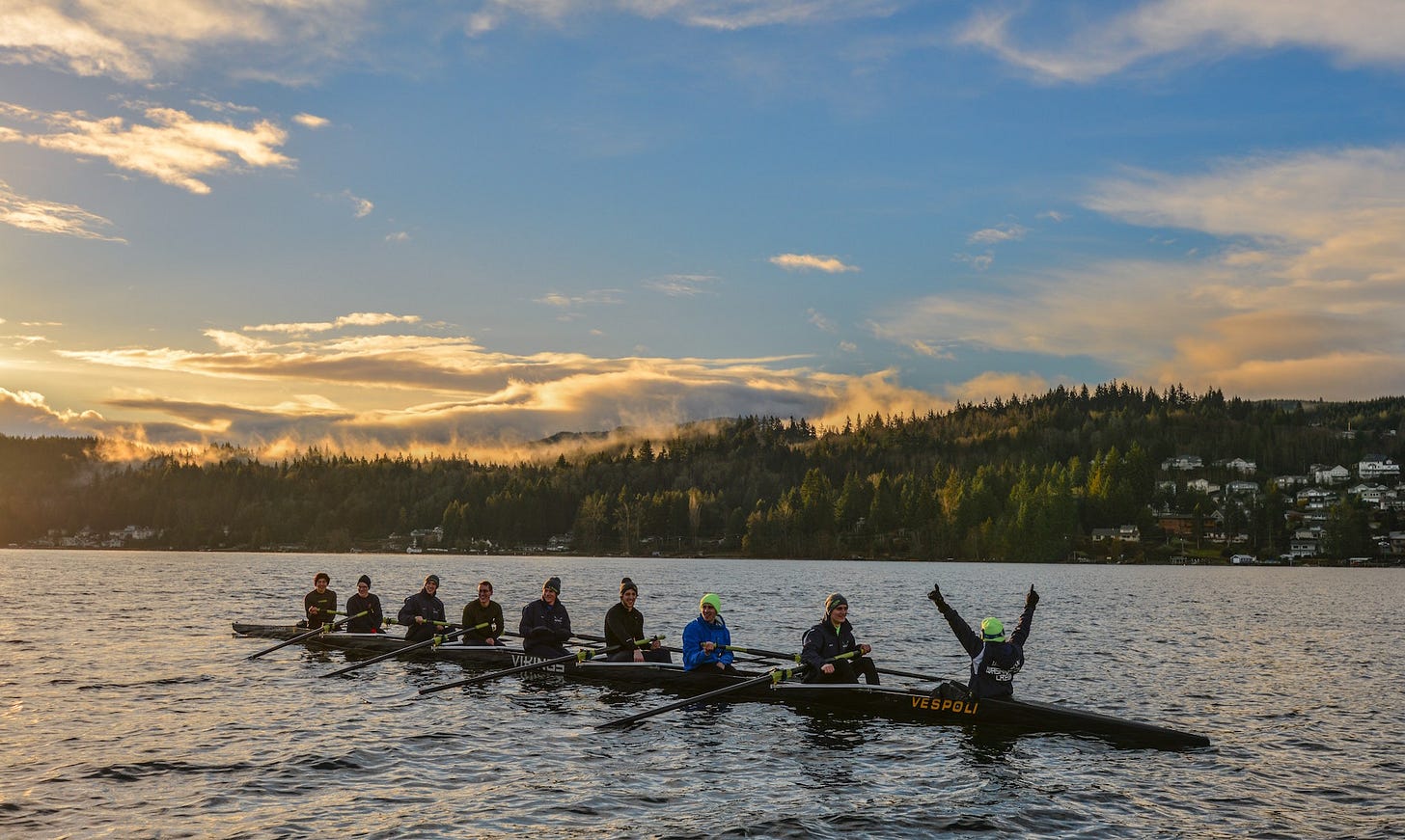Don’t Fear In-Season Rowing Strength Training
Lifting and muscle soreness doesn't affect performance as much as you might think.
It’s crucial to stay on strength training during the in-season time or race prep. Rowers who don’t do in-season strength training are at their strongest at the start of the season when it matters least, and their weakest at the end of the season when it matters most.
It’s as true in strength training as everything else that it’s easier to maintain than it is to gain. We can reduce strength training a lot during the in-season phase and still maintain all the progress we made through the off-season gain phase. Some rowers even make gains through in-season training on this lower volume, higher intensity, more focused phase of strength training.
Even without reducing strength training, the aerobic duration of a 2km race means that fatigue from prior strength training doesn’t have as much of an effect on performance as rowers often think.
Two studies offer insight on this, one from 2011 and one from 2016. Strenuous strength training had a very small negative effect on 2km performance at 24 and 48 hours later. I’ve written about these studies in my 2019 article on the concurrent training interference effect and in my 2021 article on muscle soreness and rowing.
In 2011, the rowers (male, average age 23) did Olympic snatch and clean, back squat, Romanian deadlift, bench press, bench pull, and weighted situps, for 3-4 sets of 5-8 reps per exercise at 75-85% of one-rep max. That’s a workout!
24 hours later they did a 2km erg test. The baseline 2km time was 6:38 average. The average time after strength training was 6:40. They repeated this protocol the next week, but did the 2km test after 48 hours rest instead of 24 hours, and once again achieved a 6:40 average time.
The researchers repeated a similar protocol in 2016. This time they had 28 rowers (male, average age 21). Half of the group did three of the same strength training workouts from the 2011 study, followed by a 2km test on the day after the final strength training session. The other half was the control group and did no strength training. The strength training group went from a baseline 2km time of 6:46 to a post-training time of…6:46! The control group went from 6:45 to 6:43, a gain of two seconds.
The strength training sessions are challenging, but they are lower volume, higher intensity sessions to improve strength and power. Higher rep “strength-endurance” training will cause more muscular fatigue and conflict more with power-endurance sport performance. This is one reason the “new school” model of rowing strength training does very little strength-endurance training, and especially not in-season when rowers are doing lots of rowing and erging for higher intensities and race prep.
The results of these studies suggest that the fatigue decrement of strength training is approximately two seconds, or maybe generalized to around 0.5% (6:43 or 403 seconds is 99.5% of 6:45 or 405 seconds). If your taper is just no strength training for the week of an important race, you can probably expect to go that little bit faster thanks to the rest. An actual taper cycle of progressive decreases in volume and intensity may result in even greater performance benefit.
The rowers in these studies are male, young, and highly trained, so we need more research and awareness of this limitation when transferring the results to junior, female, masters, and para rowers. I don’t know of any similar research on these populations and would love to see these study designs replicated to advance our knowledge.
For now, the cautious broad takeaway is that rowers can likely do a decent amount of rigorous strength training within a day or two of a 2km and have only a small negative effect on performance. This has been true in my anecdotal experience with a broad population of rowers. This is important for in-season planning because it suggests that we can work hard and even do seat-racing or minor regattas without losing much in performance. This gives us more training time, and therefore more opportunities for progress in the long-term, and then we’ll gain it all back and more when we do a real taper before important events.






I'll never forget one year in high school, we had a hard lift on a Thursday and a 2k had been scheduled for the next day. We were all super sore and thought we were toast for the test, so our coach agreed to postpone. But, despite how sore we all were, he had us do the workout we did every other Friday, which included a piece that's a fairly good 2k predictor.
I ended up hitting a PR on the predictor piece that day. Most other guys did fairly well too.